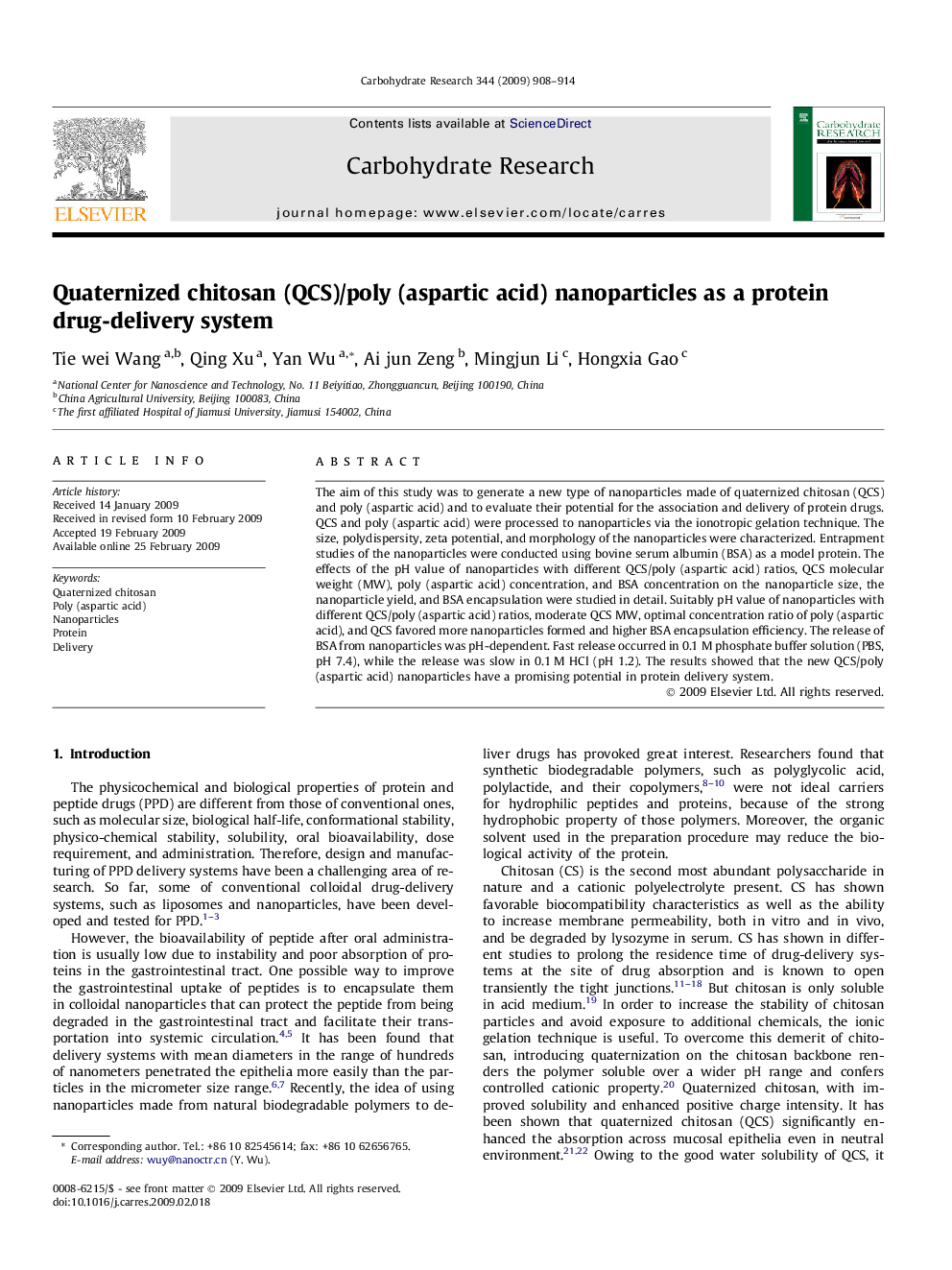| Article ID | Journal | Published Year | Pages | File Type |
|---|---|---|---|---|
| 1389515 | Carbohydrate Research | 2009 | 7 Pages |
The aim of this study was to generate a new type of nanoparticles made of quaternized chitosan (QCS) and poly (aspartic acid) and to evaluate their potential for the association and delivery of protein drugs. QCS and poly (aspartic acid) were processed to nanoparticles via the ionotropic gelation technique. The size, polydispersity, zeta potential, and morphology of the nanoparticles were characterized. Entrapment studies of the nanoparticles were conducted using bovine serum albumin (BSA) as a model protein. The effects of the pH value of nanoparticles with different QCS/poly (aspartic acid) ratios, QCS molecular weight (MW), poly (aspartic acid) concentration, and BSA concentration on the nanoparticle size, the nanoparticle yield, and BSA encapsulation were studied in detail. Suitably pH value of nanoparticles with different QCS/poly (aspartic acid) ratios, moderate QCS MW, optimal concentration ratio of poly (aspartic acid), and QCS favored more nanoparticles formed and higher BSA encapsulation efficiency. The release of BSA from nanoparticles was pH-dependent. Fast release occurred in 0.1 M phosphate buffer solution (PBS, pH 7.4), while the release was slow in 0.1 M HCl (pH 1.2). The results showed that the new QCS/poly (aspartic acid) nanoparticles have a promising potential in protein delivery system.
Graphical abstractThe preparation of QCS/poly (aspartic acid) nanoparticles, () QCS, () poly (aspartic acid).Figure optionsDownload full-size imageDownload as PowerPoint slideFigure optionsDownload full-size imageDownload as PowerPoint slideFigure optionsDownload full-size imageDownload as PowerPoint slide
